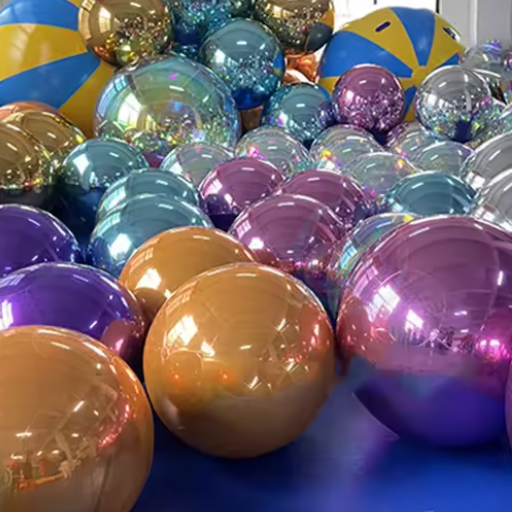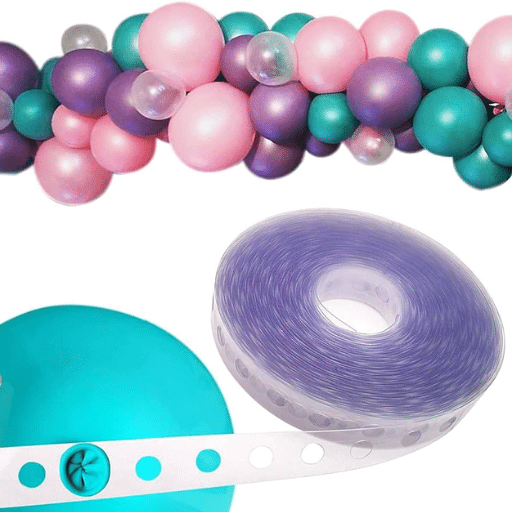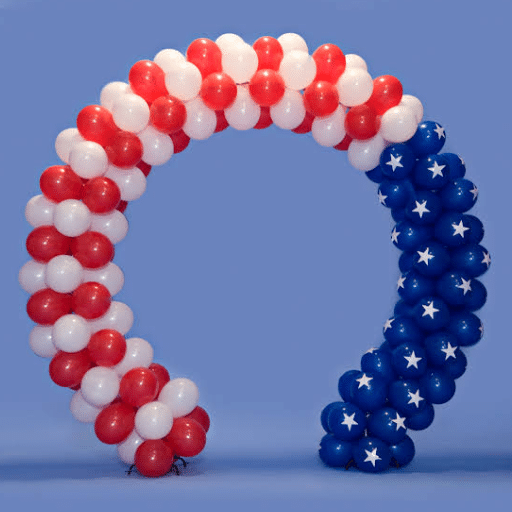Foil balloons are a fabulous detail; they add glamour to any event. Once the celebration is over, however, all that stands in the way of annoyance is deflating them properly. Whereas latex balloons are designed for one-time use, foil balloons are made to be durable and repurposable, thereby requiring that deflation is performed with some level of care and technique. This is a step-by-step guide to help you deflate your balloons, whether to store them for future use or dispose of them responsibly. By the time you’ve finished reading this article, you will have identified the appropriate implements for the task. You will find yourself gliding through the process, keeping the balloons intact and ready for the next big event.
Understanding Foil Balloons
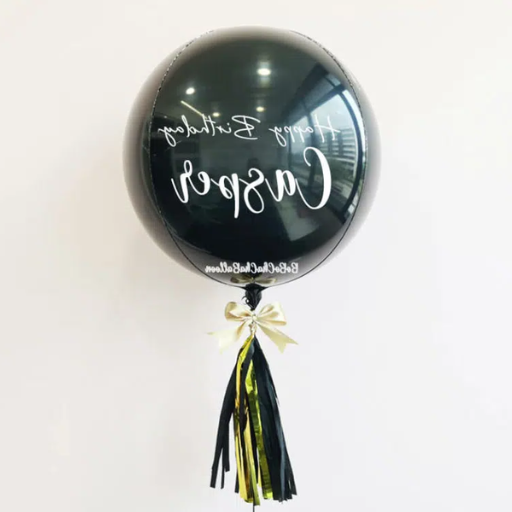
Mylar balloons, also known as foil balloons, have a metallic appearance due to a thin layer of metal applied to the plastic film. These balloons will usually be stronger than latex ones and will keep the gas in them from leaking out for a longer period. Their non-porous surface allows air to remain inside, making them excellent choices for decorations that require durability. They’re less flexible compared to latex balloons and can be easily damaged if handled roughly.
What are Mylar Balloons?
Mylar balloons are shiny, long-lasting balloons made from a single layer of polyester film coated with a metallic finish. It is attractive and highly decorative, and is mainly used at celebrations as it can hold helium longer than latex balloons.
Characteristics of Foil Balloons
Foil balloons, also known as Mylar balloons, have several distinct features that make them suitable for various situations. Here is a detailed description of their features:
- Material and Durability
Comprising thin polyester film coated with a metallic finish, the manufacturing makes these foil balloons far more durable than latex balloons. This way, they do not stretch or tear so easily, making them suitable for longer-lasting decorations.
- Helium Retention
Foil balloons have a non-porous surface; hence, they retain helium for a much longer time than a latex balloon does. They generally last anywhere between 3 and 5 days when filled with helium, even longer if the balloons are adequately sealed. Some reports have suggested a lifespan of a couple of weeks at best when kept in optimum conditions—away from heat, sharp objects, etc.
- Customizability
These balloons come in a wide range of shapes, colors, sizes, and designs. Advanced technology has given customers options for complicated prints, logos, and personalized messages. They can be customized for a wide range of events, from birthday parties to weddings and corporate events.
- Shiny and Reflective Surface
The metallic finish imparts a beautiful, glossy, and reflective appearance in foil balloons. This characteristic looks appealing in a welcoming ambiance, such as at parties.
- Environmental Considerations
Despite their comforts, foil balloons are less environmentally friendly than latex balloons. They are not biodegradable and, if discarded irresponsibly, increase the plastic load in landfills. Options for recycling foil balloons are limited, although in some localities, the issue of repurposing may be addressed.
- Size and Inflation
Very large compared to the latex kind; they can be inflated with either helium or air. Their rigid structure allows for precise shaping of letters, numbers, or custom designs; however, unlike latex balloons that merely stretch when over-inflated, these usually burst.
Foil balloons, being highly versatile and immensely appealing for adorning any type of celebration, require special care in their handling and disposal to maximize their use while minimizing their adverse environmental impact.
Common Uses for Foil Balloons
|
Use Case |
Description |
|---|---|
|
Birthday Parties |
Number, letter, and themed character balloons |
|
Weddings & Anniversaries |
Elegant, metallic and personalized designs |
|
Graduations & Milestones |
Achievement-themed designs like stars, trophies |
|
Holidays & Events |
Christmas, Valentine’s, New Year’s themes |
|
Corporate Promotions |
Custom logo and branding balloons |
|
Gift Additions |
Paired with flowers, chocolates, or gifts |
|
Themed Decorations |
Shapes matching event themes |
|
Reusable Crafts |
Pom poms, tinsel, banners, and confetti |
|
Art Projects |
Unique artwork and decorative jar covers |
|
Retail Displays |
Eye-catching store decorations |
Why Deflate a Foil Balloon?

A foil balloon can be stored, reused, or disposed of by deflating it. With timely deflation, the balloon will not occupy precious space and will not pose a hazard to the environment. Additionally, deflating and reusing foil balloons helps save money while reducing waste, making it a sustainable option for use during forthcoming celebrations.
Benefits of Deflating Balloons
- Environmental Protection
When foil balloons are left to deflate, their slow descent into the environment can result in harm to wildlife and litter. Large balloons disposed of in such a manner would have a considerable ecological impact, whereas small ones can be punctured appropriately and disposed of with a lesser environmental impact.
- Space-Saving Storage
Since foil balloons take up little space when deflated, storing them away for a subsequent day is convenient. Relevant especially where large balloons would otherwise demand a considerable storage area.
- Cost-Effectiveness
It is good for saving on decoration materials in future events, as deflated foil balloons can be reused in another celebration.
- Safety Enhancement
When deflated, balloons cease posing safety hazards, such as getting entangled in power lines or choking hazards for pets and children. Minimizing such safety hazards is best done by keeping balloons deflated.
- Product Longevity
When deflated appropriately and stored, foil balloons can be reused many times. Proper deflation and storage give the balloons multiple utilization potential while minimizing waste, thus adding a green touch to one’s event management.
Environmental Considerations
I always try to make environmentally sustainable choices that will minimize waste and reduce harm to the Earth. Deflating foil balloons properly for reuse is one way to prevent litter and reduce the demand for single-use products. Taking such small steps promotes sustainability in my life, which is part of my dedication to saving the environment.
When to Deflate a Balloon
It is a good idea to deflate a balloon after exploiting it, for instance, after an event or celebration, because it generates waste and is detrimental to the environment.
Step-by-Step Guide to Deflating Foil Balloons

|
Step |
Action |
|---|---|
|
1 |
Locate the balloon’s self-sealing valve |
|
2 |
Insert a straw into the valve gently |
|
3 |
Push the straw to release trapped air |
|
4 |
Gently press the balloon to deflate fully |
|
5 |
Remove the straw carefully |
|
6 |
Fold the balloon flat for storage |
|
7 |
Store in a cool, dry place |
Gather Necessary Tools
Tools and Materials Needed to Deflate a Foil Balloon:
Smooth Straw or Balloon Deflation Tool
The tool’s function is to release the air from the helium-filled balloon. Reusable straws made from plastic or metal are more environmentally friendly candidates.
Scissors
These may be used when the closing seal of the balloon is rather tight or awkwardly located.
Clean Flat Surface
Set an area to keep the balloon flat while deflating so as not to damage or tear it.
Sealabe Storage
After being deflated, store the balloons in a solid bag or container to protect them from dirt and damage for future reuse.
In end, over 12,000 tons of balloons go into landfills every year (source: environmental reports). Being able to deflate a foil balloon for reuse rather than throw it into the trash may cut a great deal of that waste. Proper tools ease the deflation process, preserving the balloons intact for later reuse.
Safe Techniques for Deflating
Lessons to be followed when deflating foil balloons safely and efficiently: Below are five methods with details and effectiveness:
- Use a Drinking Straw
Insert a clean drinking straw into the valve until you feel the seal break. Apply light pressure to the balloon to push the air out but keep the straw inserted. It is a simple application that does not damage the valve.
- Manual Air Release with Fingers
Gently open the valve to pinch apart the seal, and slowly squeeze the balloon with your hands to allow air to release bit by bit. It is more appropriate for sturdy types but can be time-consuming.
- Have Balloon Deflation Tools
Buy a balloon deflation tool specially designed for foil balloons. It slides into the valve and releases air quickly without risking a tear or pressure on the seam.
- Vacuum Hose Attachment
Set a gentle vacuum to the hose. Make a tiny opening in the valve and let the vacuum slowly suck the air out. It’s pretty handy if you need to deflate multiple balloons.
- Straightened Paperclip Method
Straighten a paperclip and steer it carefully inside the valve. Afterward, give it a gentle twist to disengage the seal while lightly pressing on the balloon to release air. This is a good way to do it but requires delicate handling to prevent stabbing.
Any of these deflations could keep the integrity of the foil balloon intact and make it reusable. Safe deflation can prevent wastage and lessen adverse environmental impacts.
Final Steps After Deflation
Once completely deflated, the foil balloon must be stored and handled correctly to maintain its prime condition for reuse. The balloon must then be laid flat on a clean surface and folded gently along its natural creases. Care must be taken to avoid over-folding or causing any wrinkles in the material, as these might create weak spots that could tear once reinflated. The folded balloon should be placed in a resealable plastic bag or an airtight container to prevent dust, moisture, or dirt from settling on it, which can harm its integrity.
According to modern research, the proper management of balloon reuse significantly reduces the nearly 150,000 tons of balloon waste produced globally each year. By extending the life cycle of foil balloons, one essentially helps to mitigate two critical concerns: environmental pollution and excessive use of non-biodegradable materials. Additionally, some manufacturers now offer recycling programs for foil balloons, allowing them to be disposed of properly when the balloons are no longer usable.
These things taken into consideration not only help keep the balloons in good working condition but also promote sustainable living, balancing celebrations with environmental consciousness.
Tips and Tricks for Deflating Mylar Balloons
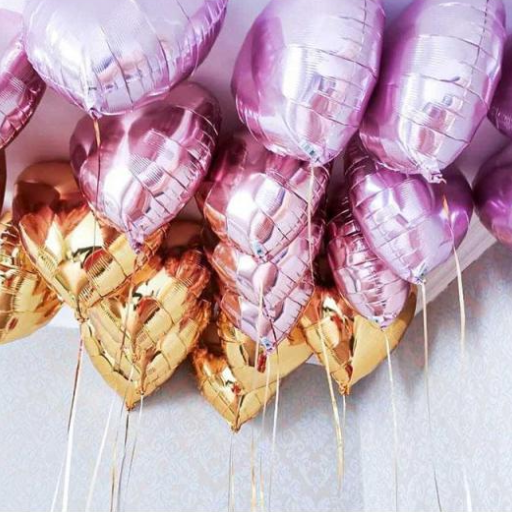
- Locate the Self-Sealing Valve
Find the tiny hole close to the base of the balloon through which it was inflated. It is the typical location for a self-sealing valve.
- Insert a Straw
Insert a straw gently into the valve, allowing the air to escape.
- Press Down Slowly
Hold the balloon gently, slowly pushing the air out through the straw. Do not squeeze too hard, as this may cause damage to the balloon.
- Fold the Balloon
After all the air has been released, fold the balloon so that it does not develop creases or tears. Folding properly makes storage for reuse much easier.
- Keep in a Cool and Dry Spot
Keep the deflated balloon away from sharp objects and on a flat surface, out of moisture and heat, to maintain its condition for reuse.
How to Inflate Foil Balloons Properly
Inflate lunging in foil balloons to offer them life and avoid killing them through accidental damage. Let me walk you through the best step-by-step procedure:
- The Balloon-Inflation Tool Should Be Selected
Use a hand or an electric pump, or a helium tank meant for balloons. Items like straws and makeshift contraptions can damage the valve and cause leaks.
- Locate the Inflation Tab
All foil balloons come with a small self-sealing tab that usually resides at the base of the balloon. Gently insert the nozzle of your pump or helium tank into this tab. Ensure the nozzle is aligned correctly to prevent tearing the balloon.
- Slow Inflation
Inflating it slowly while keeping it from popping is a good idea. An average foil balloon holds a certain amount of air or helium, and if it is over-inflated, the balloon is liable to burst. Hence, an 18-inch foil balloon should be inflated to a maximum diameter of 18 inches.
- Look for the Seams of the Balloon
Observe the seams of the balloon as it fills up. Stop inflating when the surface of the balloon looks smooth and there are no more puckers on the seams. Overinflation would stretch the seams and even cause the balloon to develop leaks.
- Seal and Conduct Leak Tests
In most cases, foil balloons incorporate a self-sealing tab that closes after you draw the nozzle. Press this tab for good measure and listen for any hissing noises that would betray the presence of small leaks.
- Helium or Air
When filled with helium, the balloon floats and lasts from several days to as long as one week, depending on the quality of the material. When filling with air, use tape or other holders to keep the balloon upright.
- Away from Sharp Objects and Sunshine
Painting an inflated balloon from any sharp edge or extreme temperature, be it direct sunshine or freezing weather, will save the balloon from material degradation and bursting.
- Pro Tip
For maximum helium lift, a standard 18-inch foil balloon requires roughly 0.44 cubic feet of helium. Always refer to the manufacturer’s instructions for recommended volumes.
Properly filling your foil balloons enhances their appearance and extends their display life for any event or celebration. Thorough care in following these steps will present the best strike and longevity.
Common Mistakes to Avoid
- Overinflating the Balloon
Overpressurizing can cause a foil balloon to burst, especially during warm weather. When filling the balloon, always remember to respect the volume capacity defined by the pressure gauge. For instance, an 18-inch foil balloon should never be filled with helium beyond 0.44 cubic feet.
- Underinflating the Balloon
Underinflating interferes with achieving the proper shape and buoyancy, resulting in less-than-desirable presentation. Inflate the balloon according to the manufacturer’s instructions, ensuring the surface is smooth and taut.
- Disregarding Temperature Changes
Heat causes foil balloons to expand, whereas cold causes them to contract, which may lead to deflation or bursting. Keep them out of direct sunlight and away from extreme weather conditions.
- Failing to Secure Balloons Properly
Inadequately tying or securing balloons may cause helium leakage or accidental release. Always use quality string for your balloons and double-check your knots or seals to ensure that they are secure.
- Use Helium Too Early
Inflating too soon causes it to lose helium before your event begins. Most foil balloons hold helium for 3-5 days, but for top-stage results, inflate the balloons one or two days before your event to ensure maximum lift and freshness.
Creative Ways to Reuse Deflated Balloons
Here are some ideas to inspire you to refashion deflated balloons with creativity and great regard for the environment:
- Balloon Art and Decorations
A deflated foil balloon can be cut into different colored shapes to make custom designs or decorations. For instance, you can cut out letters, animals, or fun designs to create banners, scrapbooks, or greeting cards. This way, you reduce landfill waste and create something special and attractive in return.
- Gift Wrapping or Customized Packages
Deflated balloons serve well as their high sheen makes an exquisite alternative for wrapping paper. Just clean and flatten the balloon, then wrap small gifts with it, or use bits of the material as adornments atop an already wrapped present. It’ll turn gifting into an event.
- Party Fun
Create party hats, crowns, or confetti out of deflated balloons. Cutting the material into shapes allows for creating interesting party accessories on demand or organizing a crafting session during the event to keep the crowd busy.
- Gardening
The reflective surface of one foil balloon may frighten away pests in your garden. First, cut the balloons into thin strips and tie them onto stakes set around your plants or hang them on a string between two points. The reflection on the material from the wind should scare birds and small animals away from nibbling on your plants.
- Educational Play for Kids
Transform old balloons into educational tools for kids! Teach colors, shapes, or even fill them with small objects like rice or beans to create sensory bags. This will foster creativity and educational development.
- Environmental Recycling or Upcycling
Contact your local recycling program to determine if foil and Mylar balloons are accepted. Some groups specifically handle materials such as Mylar to ensure they receive proper reuse or recycling. On the other hand, consider upcycling them into materials for nifty projects, such as storage pouches or bookmarks.
Data and Insights
Consequently, over 17 million latex and foil balloons are manufactured annually from industrial sources. This contributes significantly to waste unless they are disposed of correctly or reused. A study on balloon waste in 2023 pointed out that if the majority of the population takes into consideration doing something with balloons (either through upcycling or repurposing), this may lessen their environmental impact by 30%. Using your imagination to suggest creative ways to utilize deflated balloons is already part of the green approach to hosting events and celebrations.
Deflate and Recycle: Eco-Friendly Practices
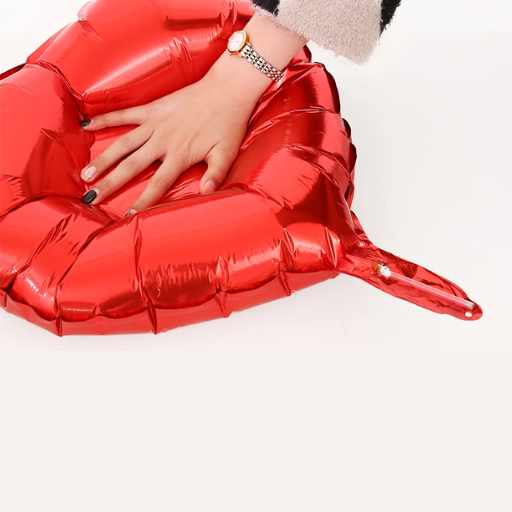
- Proper Ways of Deflating Balloons
Use scissors cautiously to snip off the knot or puncture the balloon to allow the air to escape safely. The material then becomes ready for recycling or repurposing.
- Creative Reuse of Balloons
Deflated balloons can be used in crafts, decorations, or DIY projects. Due to their versatility, balloons can be converted into various items, such as garlands, gift wraps, or storage pouches.
- Check With the Local Recycling Program
Some facilities recycle latex balloons; however, foil balloons are usually sent to special recycling plants for disposal. Check with your local authorities to determine your options for proper disposal.
- Avoid Being a One-Time Use When Possible
Choose reusable or biodegradable decorations to reduce landfill waste. These alternatives are more environmentally friendly and reduce the cost of post-use processing.
How to Recycle Foil Balloons
- Return to Party Stores
Most party supply stores and retailers take used foil balloons for recycling purposes. Local stores could have a balloon recycling program.
- Drop Off at Special Recycling Centers
Specific recycling centers handle special materials, such as Mylar, which is the material used to make foil balloons. Locate the recycling centers in your area and drop off the balloons there.
- Reuse for Future Celebrations
Foil balloons can often be reused and refilled for future parties or events, thereby reducing waste.
- Donate to Schools or Craft Groups
The used foil balloons can be donated to local schools, arts programs, or community craft groups for repurposing into creative projects.
- Repurpose at Home
Cut up the balloons and use them on your DIY projects, such as gift wraps, decorations, or shiny liners for small items, giving the material a new life instead of discarding it.
Alternative Uses for Deflated Balloons
- Emergency Insulation
Therefore, flat balloons are downers that may provide radiation-heat insulation through their reflectivity, hence keeping the heat of survival animals. This technology has been used in survival scenarios, similar to the space blanket programs. According to materials research, up to 97% of radiant heat can be reflected by the material, making it a convenient and, in fact, one of the lightest-weight methods of emergency heat loss prevention.
- Garden Protection
Deflated balloons can be used to deter intruders from the garden, protecting plants from birds and other animals. Scrap pieces that are shiny or colored can be tied to sticks or strings in the garden to create visual distractions that deter unwelcome critters. Agricultural pest control studies have found that reflective materials reduce bird damage to crops by over 50% in some cases, providing an environmentally friendly alternative to chemical deterrents.
- Making Jewelry or Accessories
Strips from deflated balloons may be used in the creation of jewelry. Strips from deflated balloons might also be creatively woven or twisted into bracelets, keychains, or small bags. Crafting communities online suggest that using balloons in their handmade items decreases the demand for newly fabricated materials and gives a unique, special look. According to data from crafting sites, DIYers use repurposed materials and convert about 20 tons of non-biodegradable material annually in such projects.
- Packing Items to Be Fragile
A deflated balloon can be used as padding in storage or shipment for light and fragile material. Wrapped around delicate objects like glass or ceramics, these layers softly cushion the impact generated during shifting and moving. Packaging experts recognize that the reuse of materials, such as deflated balloons, for packing purposes diminishes the need to use plastic bubble wrap, thereby helping to reduce single-use plastic waste.
By exploring alternative options for reuse, communities can develop a strategy to prolong the life cycle of deflated balloons and channel them into a sustainable platform for savings and environmental conservation.
Community Recycling Programs
Recycling is a crucial component of any community’s waste management and sustainability efforts. I particularly support this cause by getting involved in sorting out my trash for recycling, ensuring that I put items like paper, plastics, and glass in their respective bins for disposal. Engaging in waste reduction activities in my community by participating in collection drives and, in the process, reaching out to my neighbors to encourage them to do their part too has led to my active participation in waste reduction practices within my community.
References
-
University of Michigan – Safer Disposal of Balloons
This source provides guidelines on the safe disposal of balloons, including methods for deflating them.
Link to source -
University of California, Santa Barbara – ScienceLine
This resource explains the science behind balloon deflation, which could be relevant for understanding the process of deflating foil balloons.
Link to source
Frequently Asked Questions (FAQ)
What is the best way to deflate foil balloons?
The best way to deflate foil balloons is to use a drinking straw. Gently insert the straw into the opening of the balloon, ensuring you don’t puncture it. Once the straw is in place, gently press the balloon to let the air or helium escape, allowing it to deflate slowly.
How can I deflate a foil balloon without damaging it?
To deflate a foil balloon without damaging it, carefully insert a straw into the self-sealing valve. Gently press the balloon to release air or helium. This method minimizes the risk of puncturing the balloon and helps maintain its shape for future use.
Can I reuse foil balloons after they have been deflated?
Yes, foil balloons can be reused after they are deflated. After you have deflated the balloon, store it in a dry place, folded carefully to avoid any potential damage. This allows you to save and reuse them for future events.
What tools are needed to deflate foil balloons?
The only tool you need to deflate foil balloons effectively is a drinking straw. This simple tool allows you to insert it into the balloon’s valve and control the release of air or helium without damaging the balloon.
How do I deflate a mylar balloon?
Deflating a mylar balloon is similar to deflating a foil balloon. Gently insert a straw into the valve, ensuring it’s secure, then slowly squeeze the balloon to release the air. This method helps keep the balloon intact for potential reuse.
What should I avoid when deflating foil balloons?
When deflating foil balloons, avoid using sharp objects that could puncture the balloon. Additionally, work slowly and avoid squeezing too hard, as this could damage the balloon’s material. Always handle the balloon carefully to ensure it remains intact.
How do I store deflated foil balloons for future use?
To store deflated foil balloons for future use, make sure they are completely deflated and then fold them neatly. Store them in a dry, cool place, away from direct sunlight, to prevent damage. This will help maintain their quality for your next special occasion.
Are there any tips and tricks for deflating foil balloons effectively?
Yes, some tips for deflating foil balloons effectively include inserting the straw far enough into the valve to allow air to escape easily, and gently pressing the balloon to control the deflation rate. Always ensure you’re working in a suitable environment to avoid damaging the balloon.

